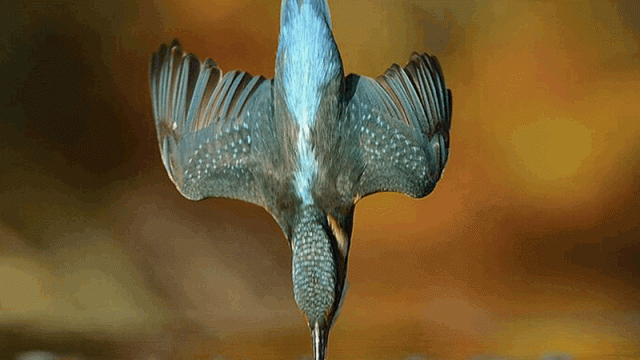It took six years and 720,000 exposures, but Scottish wildlife photographer Alan McFayden finally got his bird. He captured this stunning image of a female kingfisher in a rare mid-dive, perfectly mirrored in the water below.
McFayden’s grandfather used to take him to watch kingfishers at a favourite nesting spot near Kirkcudbright, Scotland, 40 years ago, and when he took up photography as an adult, he decided to return to capture the glorious diving action of the birds on film.
“I just remember being completely blown away by how magnificent the birds are,” the 46-year-old McFayden told the Daily Mail, “It was extraordinary how quick they flashed into the water with their brilliant blue colours…. Kingfishers dive so fast they are like bullets, so taking a good photo requires a lot of luck — and a lot of patience.”
About those colours: it’s known as iridescence, and it can also be seen in the wings of dragonflies, cicadas, and butterflies, in certain species of beetle, and in the brightly coloured feathers of male peacocks. I’ve long been a fan of the phenomenon. As I wrote back in 2007:
The colour we see doesn’t come from actual pigment molecules, but from the precise lattice-like structure of the wings (or shells, or feathers), which forces light waves passing through to interfere with itself, so it can propagate only in certain directions and at certain frequencies. And the brilliant colours that result change depending on one’s point of view. In essence, they act like naturally occurring diffraction gratings.
Victorian poet Gerard Manley Hopkins paid tribute to that brilliant colour in one of his most famous sonnets:
As kingfishers catch fire, dragonflies draw flame;
As tumbled over rim in roundy wells
Stones ring; like each tucked string tells, each hung bell’s
Bow swung finds tongue to fling out broad its name;
Each mortal thing does one thing and the same:
Deals out that being indoors each one dwells;
Selves — goes itself; myself it speaks and spells,
Crying Whát I dó is me: for that I came.
Savour those words as you feast your eyes on the full-sized photograph below and marvel at nature’s handiwork — and McFayden’s photographic skills. You can see some of the equally eye-popping outtakes at the Daily Mail or on McFayden’s Flickr page.
[Via Colossal]
[Image: Alan McFayden]

